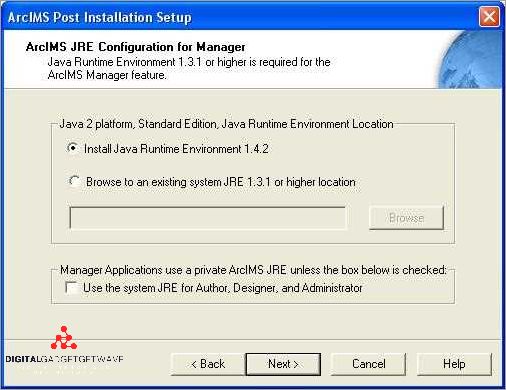
The J2SE (Java 2 Platform, Standard Edition) Runtime Environment, commonly referred to as JRE, is a software platform that provides the necessary components and libraries for executing Java applications. It is an essential component for running any Java-based program or application on a computer system.
J2SE Runtime Environment is a collection of software tools and libraries that enable the execution of Java code, regardless of the underlying operating system. It includes the Java Virtual Machine (JVM), which is responsible for interpreting and executing the Java bytecode generated from the source code. The JVM acts as a virtual machine that provides a runtime environment for Java applications to run on different platforms and operating systems.
The J2SE Runtime Environment is constantly updated by Java developers to provide better performance, security, and compatibility with the latest versions of the Java language. These updates are released in the form of new versions, which can be installed on the system to ensure that Java applications can take advantage of the latest features and improvements.
Installing the J2SE Runtime Environment on a computer system allows users to run Java applications seamlessly without worrying about the underlying system requirements or dependencies. It provides a platform-independent execution environment for Java applications, making them portable and compatible with different operating systems.
In summary, the J2SE Runtime Environment is a crucial component for Java development and execution. It provides the necessary runtime environment, libraries, and tools for running Java applications on various platforms. By installing the JRE, users can ensure that their system is compatible with Java-based software and can take advantage of the latest features and improvements provided by the Java development community.
Contents
- 1 What is J2SE Runtime Environment?
- 2 Purpose of J2SE Runtime Environment
- 3 Benefits of J2SE Runtime Environment
- 4 Installing J2SE Runtime Environment
- 5 Using J2SE Runtime Environment
- 6 FAQ about topic “J2SE Runtime Environment: What You Need to Know”
- 7 What is J2SE Runtime Environment?
- 8
- 9 Why do I need J2SE Runtime Environment to run Java programs?
- 10
- 11 Can I use J2SE Runtime Environment on different operating systems?
What is J2SE Runtime Environment?
The J2SE Runtime Environment, also known as Java Runtime Environment (JRE), is a software component that allows the execution of Java programs on a computer system. It is a part of the Java Development Kit (JDK) and is necessary to run any application or software written in the Java programming language.
The J2SE Runtime Environment contains the Java Virtual Machine (JVM), which is responsible for executing Java bytecode. Java bytecode is the compiled code of a Java program and is platform-independent, meaning it can run on any system that has the JRE installed.
The J2SE Runtime Environment also includes various libraries and frameworks that provide essential functionality for developing and running Java applications. These libraries enable developers to easily interact with system resources, perform network operations, handle user interfaces, and much more.
To use the J2SE Runtime Environment, users need to install it on their system. Once installed, it provides an execution environment for Java programs, enabling users to run Java applications seamlessly without worrying about the underlying system’s operating system or hardware.
The J2SE Runtime Environment is updated regularly by Oracle to provide bug fixes, security enhancements, and performance improvements. Users are encouraged to keep their JRE up-to-date to ensure compatibility with the latest Java applications and to maintain a secure execution environment.
Purpose of J2SE Runtime Environment
The J2SE Runtime Environment is a software component that allows the execution of Java applications on a machine. It provides the necessary libraries, tools, and frameworks for running Java code seamlessly on different platforms. This runtime environment acts as a virtual machine for executing Java bytecode, which is the compiled version of Java source code.
One of the main purposes of the J2SE Runtime Environment is to provide a secure and reliable execution environment for Java applications. It includes various security features, such as sandboxing and access control mechanisms, to protect against malicious code and safeguard the system from potential vulnerabilities.
Another important purpose of the J2SE Runtime Environment is to provide a standardized platform for Java applications. It ensures that Java code can run consistently across different operating systems and hardware architectures, without the need for any modifications. This platform independence is achieved through the use of the Java Virtual Machine (JVM), which interprets the bytecode and translates it into machine-specific instructions.
The J2SE Runtime Environment also enables the installation and management of different versions of Java. It allows users to update their Java runtime environment to the latest version, which includes bug fixes, performance improvements, and new features. This ensures that Java applications can take advantage of the latest advancements in the Java language and runtime environment.
In summary, the J2SE Runtime Environment is a crucial component in the Java programming ecosystem. It provides the necessary tools and libraries for executing Java code, ensuring security, platform independence, and compatibility across different systems. By installing the J2SE Runtime Environment, users can run Java applications without worrying about the underlying software and hardware environment.
Benefits of J2SE Runtime Environment
The J2SE Runtime Environment, also known as Java Runtime Environment (JRE), offers several beneficial features for developers and users alike. Here are some key advantages:
1. Easy installation and execution:
J2SE Runtime Environment can be easily installed on any supported machine enabling the execution of Java applications and applets. This makes it convenient for users to run Java programs without any hassle.
2. Seamless updates:
J2SE Runtime Environment provides regular updates to ensure the latest security patches and bug fixes. These updates help in maintaining a secure and stable environment for running Java applications.
3. Cross-platform compatibility:
Java code compiled using J2SE Runtime Environment can run on any operating system or platform that supports Java. This enables developers to create applications that can be executed on various devices and systems, making Java a versatile programming language.
4. Extensive library support:
J2SE Runtime Environment comes with a rich set of class libraries and APIs that provide essential components and functionalities to Java applications. This allows developers to leverage pre-built code and speed up the development process.
5. Virtual machine architecture:
J2SE Runtime Environment uses the Java Virtual Machine (JVM) to execute Java code. The JVM provides a secure and isolated environment that ensures the safety of the system running Java applications.
6. Robust development framework:
J2SE Runtime Environment offers a comprehensive development framework that includes tools, documentation, and libraries necessary for building Java applications. This framework makes it easier for developers to write, test, and debug their code.
7. Support for multiple versions:
J2SE Runtime Environment can handle multiple versions of Java applications on the same system. This allows older applications to continue running without issues while newer applications can take advantage of the latest features and improvements.
Overall, J2SE Runtime Environment provides a reliable and efficient platform for Java programming and software development. Its ease of use, cross-platform compatibility, and extensive library support make it an attractive choice for developers and users alike.
Installing J2SE Runtime Environment
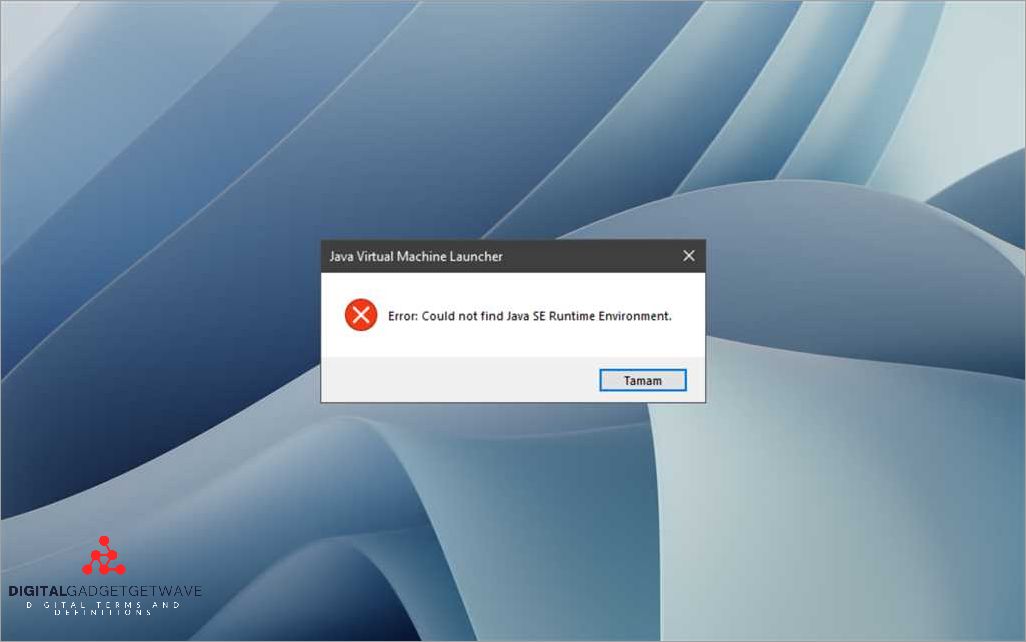
When developing Java applications, it is essential to have the J2SE Runtime Environment installed on your machine. The J2SE Runtime Environment, also known as Java Runtime Environment (JRE), is a software component that provides the necessary runtime environment to execute Java programs.
The J2SE Runtime Environment is a platform-independent software framework that allows users to run Java applications on any operating system or hardware platform. It includes the Java Virtual Machine (JVM), which is responsible for executing Java bytecode, and a set of libraries and other components that are required for the proper execution of Java programs.
To install the J2SE Runtime Environment, you need to download the appropriate version of the JRE for your operating system from the official Oracle website. Once downloaded, you can run the installer, which will guide you through the installation process.
During the installation, you may be prompted to select the installation directory and agree to the license agreement. It is recommended to keep the default settings unless you have specific requirements.
Once the installation is complete, you can verify if the J2SE Runtime Environment is installed correctly by opening a command prompt or terminal and typing the command java -version. If the installation was successful, you should see the version of the JRE that you have installed.
Having the J2SE Runtime Environment installed on your system is crucial for running Java applications. Whether you are a developer or an end-user, the JRE provides the necessary runtime environment for executing Java code and accessing Java libraries, making it an essential component for any Java-based software.
System Requirements for J2SE Runtime Environment
J2SE Runtime Environment (JRE) is an essential component for running Java applications. To ensure smooth execution of Java programs, it is important to meet the system requirements for J2SE Runtime Environment.
The first requirement is the correct version of JRE. Make sure to install the latest version available, as different Java programming languages and frameworks may have different version dependencies. This ensures compatibility with the latest features, bug fixes, and security updates.
J2SE Runtime Environment is designed to be platform-independent, which means it can run on various operating systems including Windows, macOS, and Linux. It is important to check the system requirements of the specific JRE version for your operating system.
Virtual machine capabilities are also an important consideration for J2SE Runtime Environment. The Java Virtual Machine (JVM) executes Java bytecode, providing a virtualized environment for Java applications to run. Ensure that your system has a compatible JVM to support the execution of Java applications.
In addition to the runtime environment, J2SE also includes various libraries and components that are necessary for Java application development. These libraries provide a wide range of functionality, such as database connectivity, graphical user interface (GUI) development, and network programming. It is important to have the required libraries installed for the specific Java application you are developing or running.
Regular updates are crucial for J2SE Runtime Environment to ensure optimal performance and security. Oracle, the company behind Java, releases updates and patches frequently to address vulnerabilities and improve the overall stability of the runtime environment. It is recommended to keep your JRE version up-to-date to benefit from these updates.
In summary, J2SE Runtime Environment requires the correct version of the software, a compatible operating system, a suitable Java Virtual Machine, and the necessary libraries for Java application development. Regular updates should also be performed to ensure optimal performance and security.
Downloading J2SE Runtime Environment
The J2SE (Java 2 Platform, Standard Edition) Runtime Environment is a software development component that allows the execution of Java applications on a computer system. It provides the necessary runtime environment and libraries for the Java programming language.
In order to download the J2SE Runtime Environment, you need to visit the official Java website and navigate to the downloads section. From there, you can select the appropriate version of the runtime environment based on your operating system and hardware configuration.
Once you have selected the correct version, you can proceed with the download and installation process. The J2SE Runtime Environment can be installed on various operating systems, including Windows, Mac OS, and Linux.
After the installation is complete, the J2SE Runtime Environment is integrated with the Java Virtual Machine (JVM) on your machine. This allows you to execute Java applications and run Java code on your system.
The J2SE Runtime Environment provides a platform for the execution of Java applications and is essential for anyone involved in Java programming or development. It ensures that your applications run smoothly and efficiently, as it contains the necessary components and libraries required for the execution of Java code.
It is important to keep your J2SE Runtime Environment up to date, as newer versions may contain bug fixes, performance improvements, and additional features. Regularly checking for updates and installing them can help ensure the security and stability of your Java applications.
Installing J2SE Runtime Environment
The J2SE Runtime Environment, also known as Java Runtime Environment (JRE), is a software platform that provides the necessary components for the execution of Java applications. It includes the Java Virtual Machine (JVM), libraries, and other supporting files required for running Java programs.
To install J2SE Runtime Environment, you need to download the appropriate version of the software for your operating system. The JRE is available for multiple platforms, including Windows, macOS, and Linux.
Once the installation package is downloaded, you can start the installation process. Follow the on-screen instructions to install the J2SE Runtime Environment on your system. After the installation is complete, you can begin running Java applications on your machine.
The J2SE Runtime Environment is a vital component for running Java applications, as it provides the necessary runtime environment for executing the Java code. It acts as an intermediary between the application and the underlying operating system, abstracting away the platform-specific details.
Installing J2SE Runtime Environment ensures that your system is equipped with the latest version of the Java software. Regular updates are released to improve performance, add new features, and address security vulnerabilities. It is recommended to keep your JRE up-to-date to ensure optimal compatibility and security.
Using J2SE Runtime Environment
The J2SE Runtime Environment is a necessary component for running Java applications. It provides the required libraries, virtual machine, and other tools needed for the execution of Java code.
The J2SE Runtime Environment acts as a platform for the Java programming language, allowing developers to build and deploy Java applications across different operating systems. It is available for various platforms such as Windows, Mac, and Linux.
To use the J2SE Runtime Environment, you must install the appropriate version for your system. The J2SE Runtime Environment is regularly updated to provide bug fixes, security enhancements, and performance improvements. It is important to keep your J2SE Runtime Environment up to date to ensure the smooth and secure execution of your Java applications.
Once the J2SE Runtime Environment is installed, it becomes the runtime environment for Java applications. This means that it provides the necessary infrastructure for the execution of Java code, including the Java Virtual Machine (JVM) and the Java Class Library. This allows Java applications to run consistently across different systems without the need for recompilation.
The J2SE Runtime Environment is an essential component for Java application development and execution. It provides the necessary tools and libraries for developers to write and test their code. Additionally, it ensures that Java applications can be executed on any system with a compatible J2SE Runtime Environment installed.
Working with J2SE Applications
The J2SE (Java 2 Platform, Standard Edition) is a software development platform that provides libraries, tools, and APIs for creating Java applications. It includes the Java Runtime Environment (JRE), which is necessary to run Java applications, and the Java Development Kit (JDK), which includes additional tools for Java application development.
When working with J2SE applications, developers can take advantage of a wide range of features and components provided by the Java language and runtime environment. These include a rich set of libraries for handling data structures, networking, graphics, and user interfaces. Developers can also leverage the Java Virtual Machine (JVM), which provides a platform-independent execution environment for running Java code.
One important aspect of working with J2SE applications is keeping up-to-date with the latest Java versions and updates. The Java language is constantly evolving, and new versions of the runtime environment are released regularly. Staying current with these updates ensures that applications are compatible with the latest features and security fixes.
Developers can build J2SE applications using a variety of programming frameworks and tools. These include popular integrated development environments (IDEs) like Eclipse and IntelliJ IDEA, which provide advanced features for code editing, debugging, and project management. Additionally, developers can use build tools like Apache Maven or Gradle to automate the compilation and packaging of their applications.
To deploy a J2SE application, the Java runtime environment must be installed on the target machine. This allows the application to run using the JVM. The runtime environment can be installed either by downloading it directly from the Java website or by including it as part of the application installation package. This ensures that the application will work correctly on all machines, regardless of the operating system or hardware.
In conclusion, working with J2SE applications involves utilizing the Java language, libraries, and runtime environment to develop, deploy, and execute Java applications. Staying up-to-date with the latest Java versions and updates is important to ensure compatibility and security. With the right tools and frameworks, developers can efficiently create Java applications for a variety of platforms and environments.
Common Issues and Troubleshooting
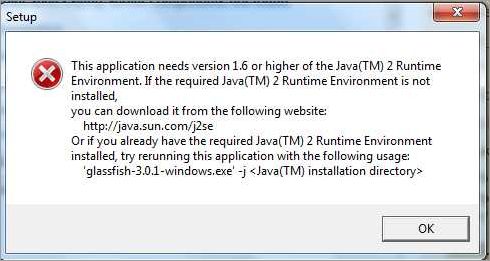
When using the J2SE Runtime Environment, there may be some common issues that users may encounter. Here are a few tips to help troubleshoot these problems:
- Installation Errors: If you encounter errors during the installation process, make sure that you have the correct version of Java installed for your operating system. Also, check if you have administrative privileges to install software on your machine.
- Runtime Errors: Runtime errors can occur when running Java applications or applets. It is important to check if you have the correct version of the Java Runtime Environment (JRE) installed. If not, you can download and install the latest version from the official Java website.
- Library Errors: Libraries are an essential component of Java development. If you encounter errors related to missing or incompatible libraries, make sure that you have the required libraries installed and that they are compatible with your Java platform version.
- Compatibility Issues: Java is a platform-independent programming language, but there may still be compatibility issues between different versions of Java. If you are experiencing compatibility issues, try updating your Java development environment to the latest version.
- Updating Java: It is important to keep your Java environment up to date to benefit from the latest security patches and bug fixes. Check for updates regularly and install them to ensure optimal performance and security.
- Application Errors: If you encounter errors specific to a Java application, it is important to check the application code and ensure that it is written correctly. Troubleshoot the code to identify any potential issues or bugs that may be causing the error.
- Execution Issues: If you are unable to run Java applications or applets, check if you have the necessary Java Virtual Machine (JVM) installed. Also, check if the application or applet requires any specific Java frameworks or components.
- Development Errors: If you are a Java developer, it is common to encounter errors during the development process. Make sure to double-check your code for syntax errors and logical issues. Also, use debugging tools and techniques to identify and resolve any runtime errors.
By following these troubleshooting tips, you can resolve common issues related to the J2SE Runtime Environment and ensure smooth execution of Java applications and applets.
Updating J2SE Runtime Environment
Updating the J2SE Runtime Environment, also known as Java Runtime Environment (JRE), is crucial for maintaining a stable and secure Java language execution environment. The JRE is a virtual machine component that allows the execution of Java applications and provides the necessary runtime libraries and system resources for Java code execution.
With each new version of Java, updates to the J2SE Runtime Environment are released to enhance the performance, stability, and security of the Java platform. These updates address any known bugs or vulnerabilities and may also introduce new features or improvements to the Java Virtual Machine (JVM).
Updating the J2SE Runtime Environment is typically performed by downloading and installing the latest version of the Java Development Kit (JDK) or Java Runtime Environment (JRE) from the official Java website. This ensures that your Java environment is up to date and compatible with the latest Java applications and frameworks.
It is essential to regularly update the J2SE Runtime Environment to benefit from the latest advancements in Java technology. Updating your Java environment ensures that any Java-based software, such as applications or web development frameworks, can run efficiently and securely on your system.
By keeping your J2SE Runtime Environment up to date, you can take advantage of the latest Java language features, performance optimizations, and security patches. This not only improves the overall execution speed of Java applications but also helps safeguard your system against potential security vulnerabilities.
In conclusion, updating the J2SE Runtime Environment is vital for maintaining a robust and reliable Java development environment. By regularly updating your Java environment, you can ensure that your system is compatible with the latest Java applications and frameworks. Additionally, updating your JRE keeps your system secure by addressing any known bugs or vulnerabilities in the Java environment.
Summary of J2SE Runtime Environment
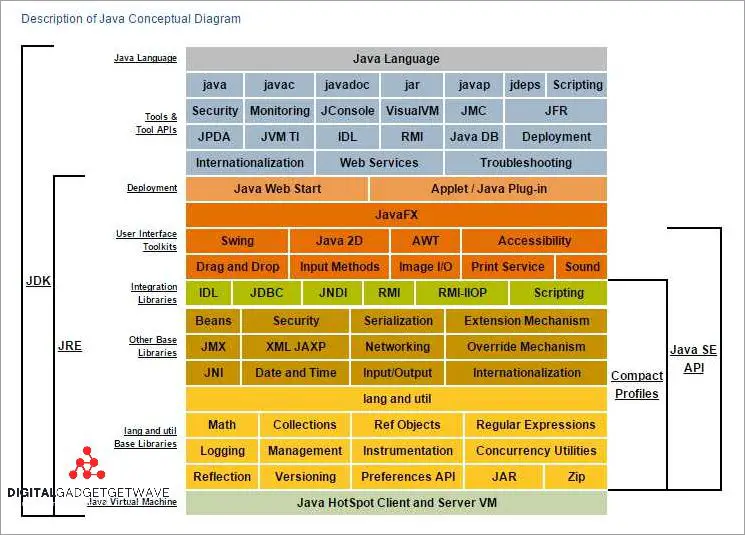
The J2SE Runtime Environment is a software component that provides the necessary platform for programming in the Java language. It allows developers to write and execute Java applications, as well as run Java applets within a web browser. The runtime environment includes a virtual machine, libraries, and other components required for the execution of Java code.
One of the key features of the J2SE Runtime Environment is its ability to support multiple versions of Java. This allows developers to write their code using a specific version of the Java language, while still being able to run it on different versions of the runtime environment. This flexibility is crucial for ensuring that Java applications can run on various operating systems and devices.
The J2SE Runtime Environment also provides a secure and stable environment for Java applications. It includes built-in security features, such as sandboxing, which helps protect the system from malicious code. Additionally, it offers automatic updates to ensure that the runtime environment is always up-to-date with the latest security patches and bug fixes.
Furthermore, the J2SE Runtime Environment is an integral part of the Java development ecosystem. It provides developers with a set of tools and frameworks for building and deploying Java applications. This includes a comprehensive set of libraries and APIs that simplify the development process and enable developers to create robust and scalable applications.
In summary, the J2SE Runtime Environment is a critical component for Java developers. It provides the necessary infrastructure and tools for writing, executing, and deploying Java applications. With its support for multiple versions, built-in security features, and rich development environment, the J2SE Runtime Environment is an indispensable part of the Java ecosystem.
Final Thoughts on J2SE Runtime Environment
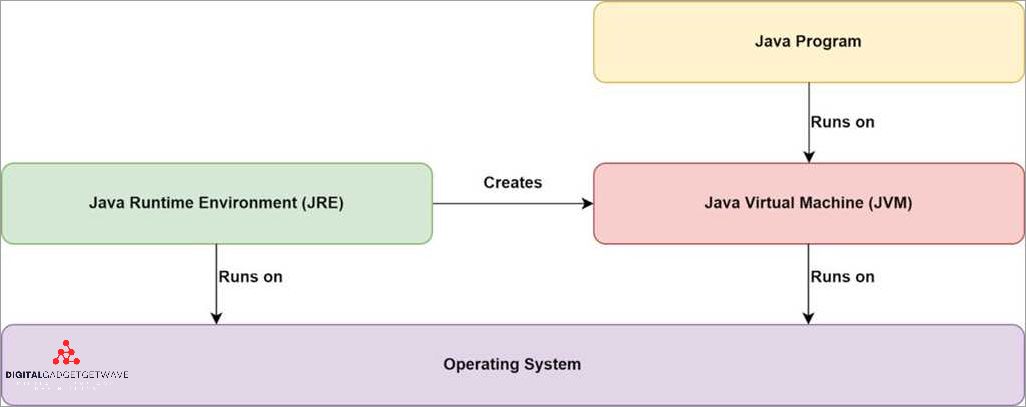
In conclusion, the J2SE Runtime Environment is an essential virtual machine and framework that allows you to run Java applications on your system. It provides the necessary runtime environment for executing Java code, making it a vital component for the installation and execution of Java software.
With the J2SE Runtime Environment, developers can write code in the Java programming language and create applications that can run on any platform that supports the Java runtime environment. This cross-platform capability is one of the key advantages of using Java for software development.
Furthermore, the J2SE Runtime Environment includes a comprehensive library of classes and APIs that developers can leverage to simplify and speed up the development process. These libraries provide ready-to-use functions and components that can be easily integrated into an application, saving developers time and effort.
Updating the J2SE Runtime Environment on your system is crucial as it ensures compatibility with the latest Java language features and programming enhancements. It also includes critical security updates to protect your system from potential vulnerabilities.
In summary, the J2SE Runtime Environment is a crucial component for running Java applications. Its virtual machine, framework, and runtime environment provide developers with the necessary tools and resources to develop and execute Java code effectively. By keeping your J2SE Runtime Environment up to date, you can take advantage of the latest Java features and ensure the security of your system.
FAQ about topic “J2SE Runtime Environment: What You Need to Know”
What is J2SE Runtime Environment?
J2SE Runtime Environment stands for Java 2 Platform, Standard Edition Runtime Environment. It is a software package that provides the necessary runtime support for running Java applications and applets. It includes the Java Virtual Machine (JVM), core libraries, and other components required to run Java programs.
Why do I need J2SE Runtime Environment to run Java programs?
J2SE Runtime Environment is required to run Java programs because it contains the Java Virtual Machine (JVM) which is responsible for executing Java bytecode. Java programs are compiled into bytecode, which is a platform-independent code. The JVM translates this bytecode into machine-specific instructions that can be executed by the underlying operating system.
Can I use J2SE Runtime Environment on different operating systems?
Yes, J2SE Runtime Environment is designed to be platform-independent and can be used on different operating systems. It is available for Windows, Mac, and various Unix-like systems. However, you should make sure to download the appropriate version of J2SE Runtime Environment for your specific operating system.


